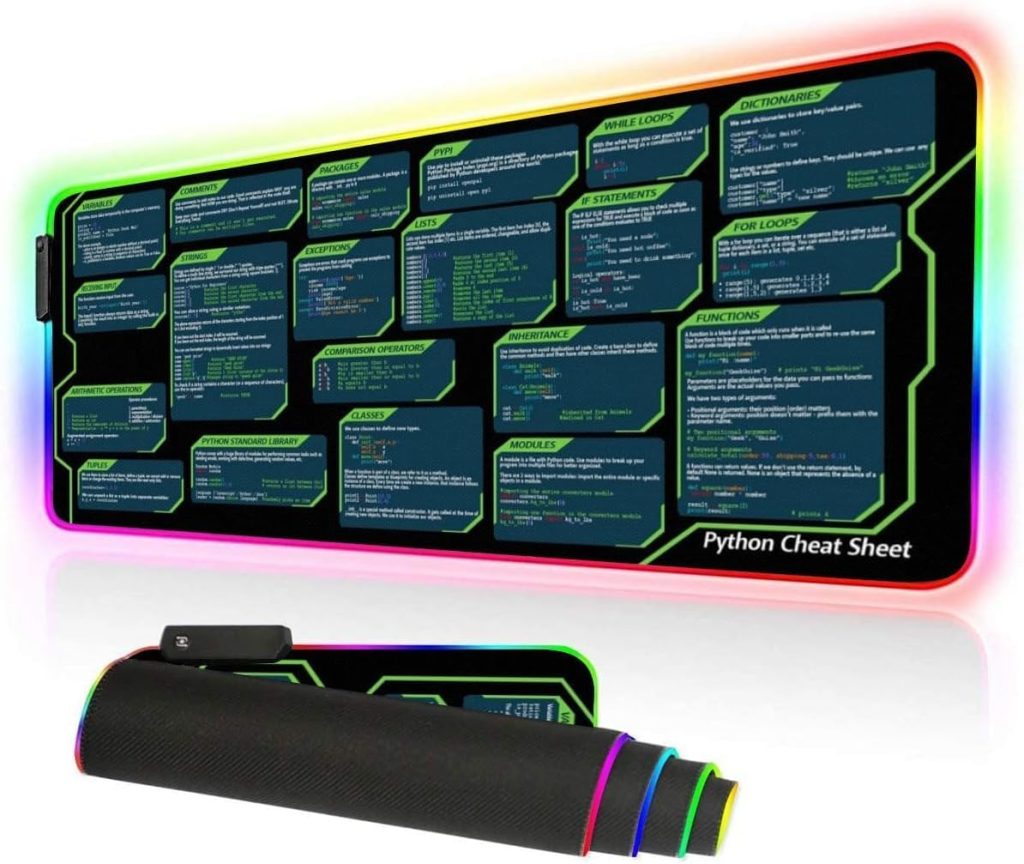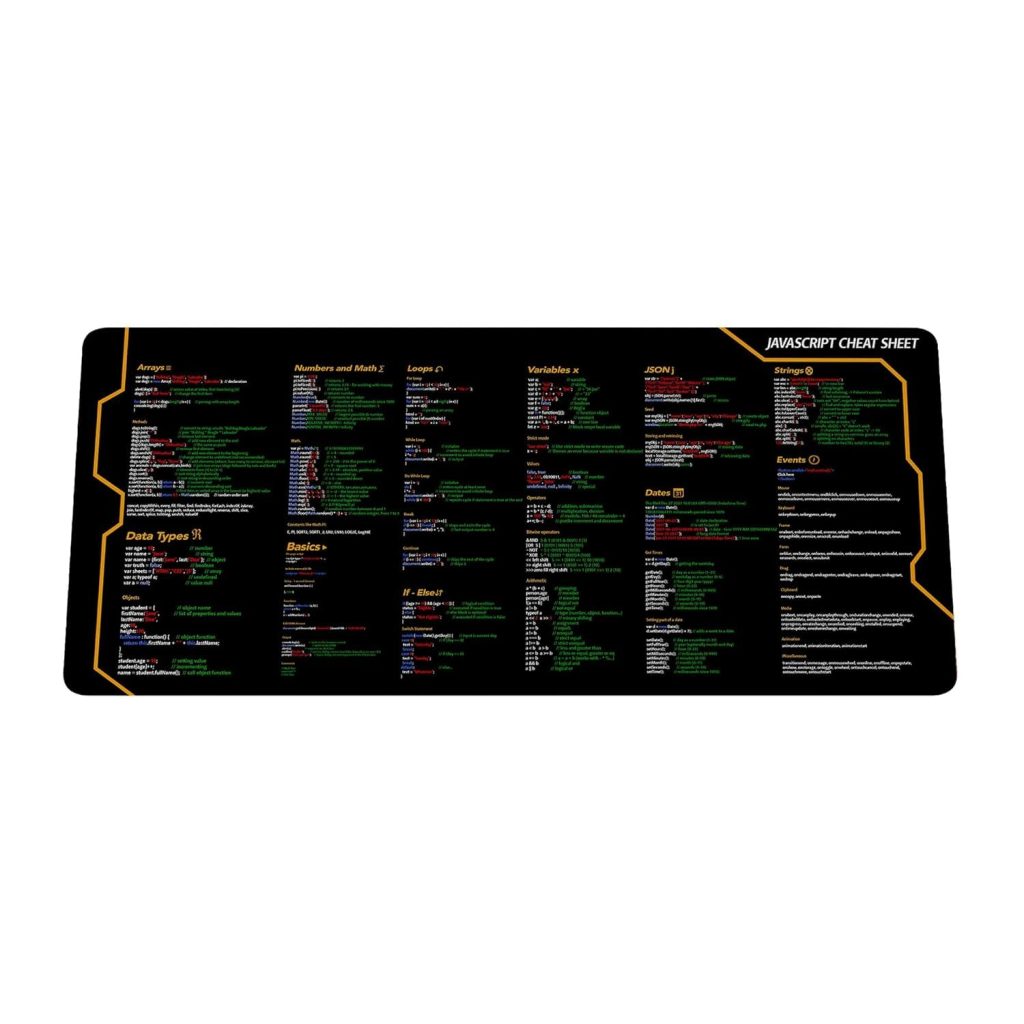
Feature extraction and engineering are critical processes in the realm of machine learning, essentially serving as the bridge between raw data and model readiness. Without adequate feature representation, even the most sophisticated algorithms can struggle to make sense of inputs, leading to subpar performance. The notion of features refers to the individual measurable properties or characteristics of a phenomenon being observed. In simpler terms, features are inputs that the machine learning model uses to learn from the data.
Feature extraction can be described as the process of transforming raw data into a set of features that are more suitable for the model. This process often involves dimensionality reduction techniques, where we extract the most relevant attributes while discarding noise and redundancy, ensuring that the data maintains its integrity and usability.
On the other hand, feature engineering takes a more holistic approach, working not only on the transformation of existing features but also on the creation of new ones that can enhance the predictive power of machine learning models. This might involve techniques such as polynomial feature generation, discretization, or even domain-specific knowledge to create new features that would otherwise not exist in the provided dataset.
In practical applications, we often find that the quality of the extracted features has a more profound impact on the model’s performance than the choice of the algorithm itself. For instance, converting textual data into numeric form through methods such as term frequency-inverse document frequency (TF-IDF) or embedding techniques can significantly elevate the model’s ability to learn patterns within the data.
To illustrate a basic feature extraction process using Python and scikit-learn, consider the scenario where we want to convert a collection of text documents into a format amenable for machine learning:
from sklearn.feature_extraction.text import TfidfVectorizer
# Sample documents
documents = [
"the cat in the hat",
"the quick brown fox",
"the lazy dog",
]
# Initialize TF-IDF Vectorizer
vectorizer = TfidfVectorizer()
# Fit and transform the documents
tfidf_matrix = vectorizer.fit_transform(documents)
# View the feature names and resulting matrix
print(vectorizer.get_feature_names_out())
print(tfidf_matrix.toarray())
This simple example demonstrates the transformation of raw text into numerical features that can be fed into a machine learning model. The TF-IDF vectorization not only simplifies the complexity of the language but also highlights important words that could influence the model’s predictions.
Ultimately, mastering feature extraction and engineering is akin to honing an artist’s eye for detail. It brings forth the ability to perceive the underlying structure of data, fostering a clearer path towards informed and effective model training.
Importance of Feature Engineering in Machine Learning
Understanding the importance of feature engineering in machine learning is essential, as it directly translates into the ability of algorithms to discern patterns and make predictions based on the input data. In essence, the features we extract or engineer serve as the fundamental building blocks of any machine learning model. When features are poorly chosen or inadequately represented, it hampers the model’s capacity to learn, not to mention its predictive accuracy.
One of the critical reasons feature engineering holds such significance lies in its ability to incorporate domain knowledge into the model. By using insights from the field of study pertinent to the data, we can create features that capture the nuances and complexities of the underlying phenomena. For example, in a healthcare dataset, rather than using raw numeric values for various health indicators, a feature engineer might create a new feature that indicates whether a patient’s health metrics are in a critical range, thereby providing the model with additional context that could be pivotal for accurate predictions.
Furthermore, feature engineering plays a pivotal role in addressing issues of dimensionality. A dataset laden with superfluous features can lead to overfitting, where the model learns to memorize the training data instead of generalizing from it. By selectively choosing and creating features, practitioners can mitigate this risk, allowing models to perform well not only on training datasets but also on unseen data. That’s where techniques like feature selection and dimensionality reduction become indispensable.
Let’s think a practical example of how feature engineering can improve a model’s performance using Python. Suppose we have a dataset representing houses for sale, and we want to predict the house prices. Here, we can create new features from existing ones, such as extracting the number of bedrooms from a room count, or converting square footage into a categorical variable to indicate the size group (small, medium, large).
import pandas as pd
# Sample data
data = {
'total_rooms': [5, 10, 15, 20],
'square_footage': [1500, 2500, 3500, 4500],
}
# Create a DataFrame
df = pd.DataFrame(data)
# Feature engineering: create new features
df['bedrooms'] = df['total_rooms'] - 1 # Assuming at least one room is always a living room
df['size_category'] = pd.cut(df['square_footage'], bins=[0, 2000, 3000, float('inf')], labels=['small', 'medium', 'large'])
print(df)
In this snippet, we derive two new features: the number of bedrooms by assuming one room is a living room and categorizing the house into size categories based on square footage. This not only simplifies the model’s task but also provides more intuitive features that can enhance interpretability and performance.
Ultimately, feature engineering is not merely a preparatory step but a vital art form in machine learning. The emphasis on constructing insightful features can lead to substantial improvements in model performance, often yielding benefits that outweigh those gained through algorithmic advancements alone. It embodies the convergence of creativity and analytics, where intuition informs the science of data modeling.
Common Techniques for Feature Extraction
When delving into feature extraction, it is important to understand that various techniques can be employed depending on the type of data you’re dealing with. Here we will explore some of the common techniques for feature extraction that can help improve the performance of machine learning models by distilling data into its essential characteristics.
1. Text Feature Extraction: Text data can be rich in information but is often unstructured. Techniques like Bag of Words (BoW) and Term Frequency-Inverse Document Frequency (TF-IDF) are fundamental for transforming text into numerical features. BoW counts the occurrences of words in a document, treating each word as a separate feature, while TF-IDF accounts for the importance of words across documents.
from sklearn.feature_extraction.text import CountVectorizer
# Sample documents
documents = [
"the cat in the hat",
"the quick brown fox",
"the lazy dog",
]
# Initialize Count Vectorizer
count_vectorizer = CountVectorizer()
# Fit and transform the documents
bow_matrix = count_vectorizer.fit_transform(documents)
# View the feature names and resulting matrix
print(count_vectorizer.get_feature_names_out())
print(bow_matrix.toarray())
2. Image Feature Extraction: When working with image data, various techniques such as Histogram of Oriented Gradients (HOG), Scale-Invariant Feature Transform (SIFT), and Convolutional Neural Networks (CNN) are widely utilized. These methods focus on capturing the essential patterns and textures present in images. For instance, HOG characterizes the shape and structure of objects by counting occurrences of gradient orientation in localized portions of an image.
from skimage.feature import hog
from skimage import exposure
from skimage import io
# Load an image
image = io.imread('path_to_image.jpg')
# Convert image to grayscale
gray_image = rgb2gray(image)
# Compute HOG features
hog_features, hog_image = hog(gray_image, visualize=True)
# Improve the contrast of the HOG image
hog_image = exposure.rescale_intensity(hog_image, in_range=(0, 10))
print(hog_features)
3. Time Series Feature Extraction: In time series data, extracting features can involve creating lag features, rolling statistics (like moving average, variance), and time-based features (like hour, day, month). This allows models to capture trends and seasonality effectively.
import pandas as pd # Sample time series data date_rng = pd.date_range(start='2023-01-01', end='2023-01-10', freq='D') data = pd.Series([1, 2, 3, 4, 5, 6, 7, 8, 9, 10], index=date_rng) # Creating lag features data['lag_1'] = data.shift(1) data['rolling_mean'] = data.rolling(window=3).mean() print(data)
4. Feature Engineering with Domain Knowledge: Domain expertise can significantly enhance feature extraction. Crafting features based on insights from the specific field of study can provide critical context that generic statistical methods overlook. For example, in a financial dataset, features like debt-to-income ratio or credit utilization can be crucial.
# Sample financial data
finance_data = {
'income': [5000, 6000, 7000, 8000],
'debt': [2000, 3000, 2500, 4000]
}
# Create a DataFrame
df_finance = pd.DataFrame(finance_data)
# Feature engineering: create new features
df_finance['debt_to_income'] = df_finance['debt'] / df_finance['income']
print(df_finance)
Using these common techniques for feature extraction not only enhances the interpretability of the data but also equips machine learning models with a more robust foundation for making predictions. By adeptly employing feature extraction strategies, data scientists can unearth hidden patterns that might otherwise go unnoticed, allowing for more nuanced and effective modeling. As we explore the capabilities of scikit-learn, we will see how these techniques are implemented with ease and efficiency, streamlining the process of preparing data for analysis.
Using scikit-learn’s Feature Extraction Modules
In scikit-learn, the feature extraction process is streamlined through a variety of dedicated modules that cater to different types of data, including text, images, and more. Using these modules not only simplifies the implementation of feature extraction techniques but also enhances the reproducibility and efficiency of your machine learning workflows.
One of the most commonly used feature extraction tools in scikit-learn is the TfidfVectorizer, which is particularly effective for converting a collection of raw text documents into a matrix of TF-IDF features. That is instrumental when dealing with textual data, as it transforms unstructured information into a structured format suitable for machine learning.
from sklearn.feature_extraction.text import TfidfVectorizer
# Sample documents
documents = [
"data science is an interdisciplinary field",
"machine learning is a subset of data science",
"deep learning is a key component of machine learning",
]
# Initialize TF-IDF Vectorizer
vectorizer = TfidfVectorizer()
# Fit and transform the documents
tfidf_matrix = vectorizer.fit_transform(documents)
# View the feature names and resulting matrix
print(vectorizer.get_feature_names_out())
print(tfidf_matrix.toarray())
In this example, the TfidfVectorizer converts the list of documents into a TF-IDF matrix, where each row corresponds to a document and each column corresponds to a term. The values indicate the importance of a term in a particular document compared to the entire collection of documents.
For image data, scikit-learn provides tools for extracting essential features that characterize images. An example of that is the skimage.feature.hog function, which computes Histogram of Oriented Gradients (HOG) features. This technique captures gradients and edges, which are critical in distinguishing objects within images.
from skimage import io
from skimage.feature import hog
from skimage import exposure
from skimage.color import rgb2gray
# Load an image
image = io.imread('path_to_image.jpg')
# Convert image to grayscale
gray_image = rgb2gray(image)
# Compute HOG features
hog_features, hog_image = hog(gray_image, visualize=True)
# Improve the contrast of the HOG image
hog_image = exposure.rescale_intensity(hog_image, in_range=(0, 10))
print(hog_features)
In this snippet, the image is first converted to grayscale, and then HOG features are calculated. The resulting features serve as a compact representation of the image, which retains crucial information about its shape and structure. Such feature extraction techniques lay the groundwork for robust image recognition and classification tasks.
Another essential feature extraction technique is used for audio and time-series data, where scikit-learn’s custom functions can be utilized alongside tools like NumPy and Pandas. For instance, extracting features such as mean, variance, and frequency components from audio signals can be invaluable in audio classification tasks.
import numpy as np import pandas as pd # Sample time series data time_series_data = np.random.randn(100) # Create a DataFrame df = pd.DataFrame(time_series_data, columns=['value']) # Feature extraction df['mean'] = df['value'].rolling(window=5).mean() df['variance'] = df['value'].rolling(window=5).var() df['max'] = df['value'].rolling(window=5).max() print(df)
In this example, rolling statistics such as mean, variance, and maximum values are calculated over a specified window, allowing patterns to emerge from the time series data. Such features can help capture the trends and fluctuations within the dataset, providing critical insights for predictive modeling.
Using scikit-learn’s feature extraction modules not only facilitates the implementation of sophisticated techniques but also supports the integration of diverse data types into a unified machine learning pipeline. With the ability to handle text, images, and time-series data seamlessly, scikit-learn empowers data scientists to focus on refining their models rather than getting bogged down in the intricacies of feature extraction.
Feature Selection Methods in scikit-learn
Feature selection is an integral aspect of the machine learning pipeline, crucial for enhancing model performance and interpretability. Unlike feature extraction, which creates new features from existing data, feature selection focuses on identifying and selecting the most relevant features from a dataset, effectively reducing dimensionality while retaining the most informative aspects. That is particularly important in scenarios where the dataset is high-dimensional, as choosing the right features can lead to improved model generalization and reduced overfitting.
In scikit-learn, several methodologies exist for effective feature selection, allowing practitioners to prune irrelevant or redundant features. These methods can be categorized into three main types: filter methods, wrapper methods, and embedded methods.
Filter Methods: These methods assess the relevance of features based on their intrinsic properties, using statistical tests to measure the relationship between each feature and the target variable. Common techniques include correlation coefficients, Chi-squared tests, and ANOVA F-tests. Filter methods are typically computationally inexpensive and independent of any machine learning algorithm.
from sklearn.datasets import load_iris
from sklearn.feature_selection import SelectKBest, f_classif
# Load dataset
data = load_iris()
X, y = data.data, data.target
# Apply SelectKBest with ANOVA F-test
selector = SelectKBest(score_func=f_classif, k=2) # Select top 2 features
X_new = selector.fit_transform(X, y)
print("Selected features:", X_new)
print("Feature scores:", selector.scores_)
In the code example above, we apply the SelectKBest method using an ANOVA F-test to select the two most significant features from the Iris dataset. The scores reflect the relevance of each feature to the target, enabling us to retain only the most informative ones for subsequent modeling.
Wrapper Methods: Unlike filter methods, wrapper methods evaluate the performance of a subset of features by training a model and assessing its accuracy. These methods can be computationally expensive since they require training multiple models, but they often lead to better performance as they think the interaction between features. Techniques such as Recursive Feature Elimination (RFE) are commonly used.
from sklearn.datasets import load_wine
from sklearn.feature_selection import RFE
from sklearn.linear_model import LogisticRegression
# Load dataset
X_wine, y_wine = load_wine(return_X_y=True)
# Create a logistic regression model
model = LogisticRegression(max_iter=200)
# Apply RFE
rfe = RFE(estimator=model, n_features_to_select=5) # Select top 5 features
X_rfe = rfe.fit_transform(X_wine, y_wine)
print("Selected features:", rfe.support_)
print("Feature ranking:", rfe.ranking_)
In the above example, we utilize RFE with a logistic regression model to select the top five features from the Wine dataset. The ‘support_’ attribute indicates which features are selected, while the ‘ranking_’ attribute gives us the rank of each feature in terms of importance.
Embedded Methods: These methods incorporate feature selection into the model training process itself. They’re typically more efficient than wrapper methods and are commonly used with algorithms that include feature selection inherently, like Lasso Regression (L1 regularization) or decision trees. These methods provide a balance, where the feature selection is driven by the model’s performance.
from sklearn.linear_model import LassoCV
from sklearn.datasets import load_boston
# Load dataset
X_boston, y_boston = load_boston(return_X_y=True)
# Apply Lasso Regression for feature selection
lasso = LassoCV(cv=5)
lasso.fit(X_boston, y_boston)
print("Selected features:", lasso.coef_ != 0)
In this example, LassoCV is used to perform feature selection automatically while fitting the model to the Boston housing dataset. The coefficients generated during fitting reveal which features are significant, providing a streamlined approach to feature selection.
Understanding and effectively applying these feature selection methods can greatly enhance your machine learning model by ensuring that it learns from the most pertinent data. By using scikit-learn’s rich toolkit, practitioners have the flexibility to incorporate the method that best aligns with their data characteristics and modeling goals.
Practical Examples of Feature Engineering
import pandas as pd
# Sample data
data = {
'total_rooms': [5, 10, 15, 20],
'square_footage': [1500, 2500, 3500, 4500],
}
# Create a DataFrame
df = pd.DataFrame(data)
# Feature engineering: create new features
df['bedrooms'] = df['total_rooms'] - 1 # Assuming at least one room is always a living room
df['size_category'] = pd.cut(df['square_footage'], bins=[0, 2000, 3000, float('inf')], labels=['small', 'medium', 'large'])
print(df)
In this snippet, we derive two new features: the number of bedrooms by assuming one room is a living room and categorizing the house into size categories based on square footage. This not only simplifies the model’s task but also provides more intuitive features that can enhance interpretability and performance.
Ultimately, feature engineering is not merely a preparatory step but a vital art form in machine learning. The emphasis on constructing insightful features can lead to substantial improvements in model performance, often yielding benefits that outweigh those gained through algorithmic advancements alone. It embodies the convergence of creativity and analytics, where intuition informs the science of data modeling.
from sklearn.feature_extraction import DictVectorizer
# Sample data
data = [
{'city': 'New York', 'temperature': 82, 'humidity': 70},
{'city': 'Los Angeles', 'temperature': 75, 'humidity': 60},
{'city': 'Chicago', 'temperature': 70, 'humidity': 80},
]
# Initialize DictVectorizer
vec = DictVectorizer(sparse=False)
# Transform the data
features = vec.fit_transform(data)
print(vec.get_feature_names_out())
print(features)
The example above demonstrates the use of DictVectorizer to convert a list of dictionaries into a matrix of features, where categorical variables are one-hot encoded. This method is particularly useful when dealing with structured data, where different types of features need to be handled differently. The resulting feature matrix provides a robust input for machine learning models, ensuring that the model can capture valuable trends and relationships across various attributes.
from sklearn.preprocessing import PolynomialFeatures import numpy as np # Sample data X = np.array([[1], [2], [3]]) # Initialize Polynomial Features poly = PolynomialFeatures(degree=2) # Transform the data X_poly = poly.fit_transform(X) print(X_poly)
Here, we use PolynomialFeatures to create new polynomial features from our existing data. By generating these additional features, we provide the model with the potential to learn non-linear relationships in the data. This is a classic example of how feature engineering can unlock hidden patterns that simpler linear modeling might overlook.
By using these diverse techniques of feature engineering, practitioners can enhance their models significantly, tailoring the input data to better fit the underlying patterns and complexities of their specific use cases. This meticulous craftsmanship of data not only optimizes model performance but also enriches the entire analytic journey.
Best Practices and Tips for Effective Feature Engineering
Effective feature engineering combines creativity, domain knowledge, and rigorous experimentation. The best practices outlined here can guide practitioners in uncovering meaningful insights and enhancing model performance.
Understand Your Data: Before diving into feature engineering, it’s imperative to gain a comprehensive understanding of the dataset. Investigate the data types, distributions, and inherent relationships. Utilize exploratory data analysis (EDA) techniques, such as visualization and summary statistics, to identify potential features and understand their significance to the target variable.
Leverage Domain Knowledge: Engaging with domain experts can provide critical insights that inform feature engineering efforts. Knowledge from the specific field of study can aid in selecting, creating, and transforming features that are rooted in real-world significance. For example, in financial datasets, knowing metrics such as debt-to-income ratios can lead to more effective feature creation.
Be Mindful of Dimensionality: High-dimensional datasets can be prone to overfitting, where the model learns noise instead of the underlying pattern. Techniques such as feature selection should be employed to retain only the most relevant features. Regularly evaluate the dimensionality of the dataset against model performance to ensure a balanced approach.
Iterate and Experiment: Feature engineering is not a linear process; it requires iterative experimentation. Develop multiple feature sets, apply different transformations, and evaluate their impact on model performance through validation techniques such as cross-validation. This cycle of testing and refining features very important for optimizing model accuracy.
Utilize Feature Scaling: Many algorithms, especially those involving distance calculations, are sensitive to the scale of features. Applying normalization or standardization can enhance the model’s performance. Tools like sklearn.preprocessing.StandardScaler can help ensure that all features contribute equally to the outcome.
Document Your Work: Keeping thorough documentation of feature engineering decisions and their impacts is critical for replicability and knowledge transfer. This practice can facilitate collaboration and provide clarity when revisiting projects at a later date, making it easier to build upon previous work.
Model-Driven Feature Selection: Use model-driven approaches, such as using feature importance from tree-based models or coefficients from regularized regression, to focus on the most impactful features. This can reveal unexpected insights regarding which features should be included or excluded in the final model.
By incorporating these best practices into your feature engineering workflow, you can significantly enhance the robustness and interpretability of your machine learning models, ultimately leading to better performance and more reliable predictions.
import pandas as pd
from sklearn.preprocessing import StandardScaler
# Sample data
data = {
'feature1': [1, 2, 3, 4, 5],
'feature2': [10, 20, 30, 40, 50],
}
# Create a DataFrame
df = pd.DataFrame(data)
# Initialize the Standard Scaler
scaler = StandardScaler()
# Fit and transform the data
scaled_features = scaler.fit_transform(df)
print(scaled_features)
In this example, we apply standardization using StandardScaler to ensure all features have a mean of zero and a standard deviation of one, making them comparably significant in the modeling process.






